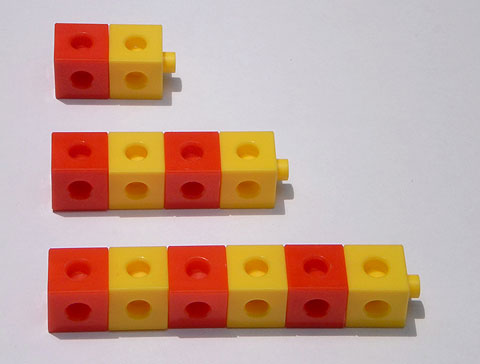Home > Patterns > Misunderstandings > Number sequences > Introducing number sequences
Introducing number sequences
In teaching number sequences, it is important to start with concrete examples using blocks or other manipulatives.
It is easiest to start by showing the growth of a simple repeating pattern.
Show how it grows by adding successive identical units of repeat.
Counting the number of blocks gives the sequence 2, 4, 6… Students can see that each time a unit of repeat is added, the total number of blocks increases by 2. Also, the total number of blocks is twice the number of units of repeat.
Next, move on to growing patterns made up of pictures or drawings of real objects. The activity Let’s have a party! is one possibility.
Students can then examine abstract drawings such as arrays of dots. An example is given in Find a rule.
In addition to giving students patterns to continue, it is also instructive to include patterns with missing units. Students can also be encouraged to create their own growing patterns and to look for them in their environment.


